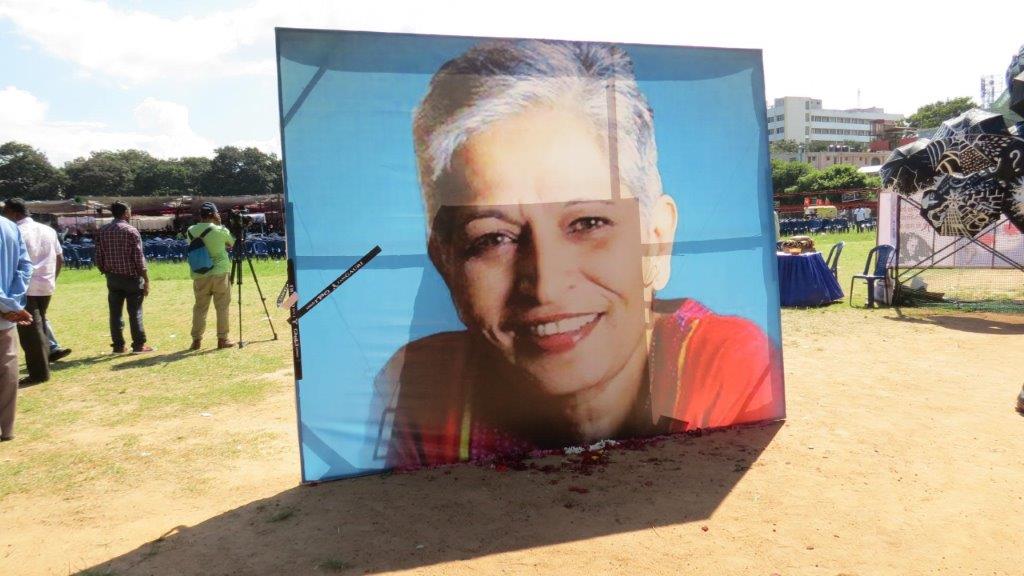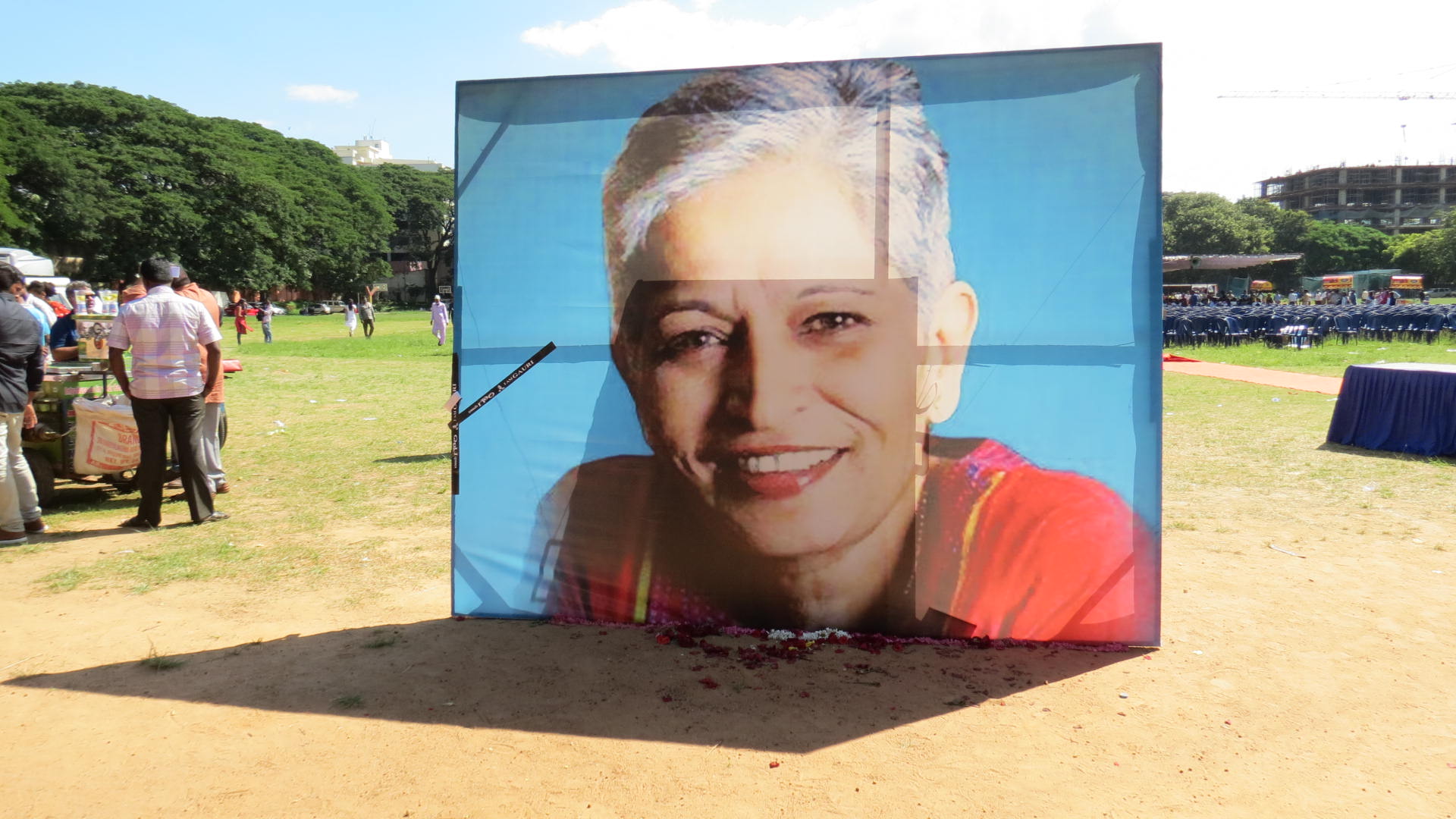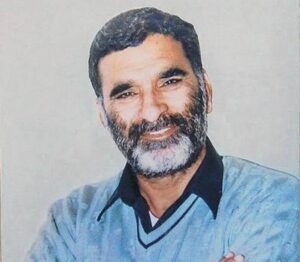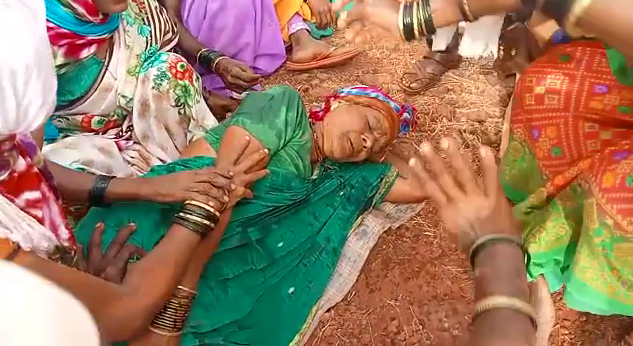

Update: On Sept 5, 2022, five years after Gauri Lankesh was killed, the case came up before a trial court hearing the case against the 18 persons accused of her murder. The accused are lodged in Bengaluru, Yeravada and Mumbai prisons. The next date for the hearing is Sept 14, 2022.

A Free Speech Collective timeline.
Name: Gauri Lankesh
Date of death: September 5, 2017
Brief synopsis: Gauri Lankesh, 55, senior journalist and editor of Gauri Lankesh Patrike was shot dead at point blank range on September 5, 2017, at about 7.45 pm as she was entering her home in Bengaluru. She was an outspoken critic of right-wing extremism, and minced no words in her writings or speeches. She had received several death threats over the years. The modus operandi of the murder bears remarkable similarity to the murders of three other secular, rationalist intellectuals. The pattern in the brutal elimination of dissenting voices begs the question: if proper investigations were carried out and lynch pins and key conspirators apprehended, would Gauri Lankesh be alive today?
The conspiracy
The murder of Gauri Lankesh, 55, senior journalist and editor of Gauri Lankesh Patrike on September 5, 2017 outside her home in the heart of Bengaluru, sent shock waves across the country, and indeed the world. The blatant use of bullets to silence a vocal critic of right-wing extremism was widely condemned, and the ideology that supported such a brutal elimination of a voice of dissent came under attack. The probe undertaken by the Special Investigation Team (SIT) reveals a meticulously planned operation by a network of right-wing extremist groups across two states – Karnataka and Maharashtra.
There were similarities between the murder of Gauri Lankesh and the recent murders of three other rationalist and secular intellectuals. The motive, modus operandi, and weapon used is believed to be the same.
- Doctor and rationalist Narendra Dabholkar, shot by two motorbike borne men on August 20, 2013, in Pune.
- Author and politician Govind Pansare, shot by two motorbike borne on February 16, 2015 in Kolhapur
- Scholar, rationalist and teacher MM Kalaburgi was shot dead when he answered the door of his house to two motorbike-borne men on August 30, 2015.
Given the similarities, a list was drawn up of over 200 people with links to hardline Hindu right-wing groups active in Karnataka, Maharashtra and Goa.
Murder: The lead up and aftermath
- September 2016: Hindu Janajagruti Samiti convener Amol Kale hires the alleged killer Parashuram Waghmare – a member of Sri Ram Sene – from Belagavi. Waghmare was told to kill Lankesh for the sake of saving Hindu dharam. Kale then took Waghmare to an isolated three-acre land in Khanapur, Belgaum to practice shooting using an air pistol.
- July 2017: Waghmare comes to Bengaluru and conducts a recce of Gauri’s house. Waghmare does not know any of his associates by name, only through their aliases. Waghmare was told that someone will pick him up on a bike and he had to pull the trigger of the 7.65 mm country-made pistol.
- September 4, 2017: Waghmare and Ganesh Miskin arrive at Gauri Lakesh’s house to carry out the assassination. However, she returns home late that day, and providentially espcapes the murder attempt.
- September 5, 2017: At 8.09 pm, Waghmare and Miskin arrive on a black motorcycle outside Lankesh’s house and pump seven bullets into her. Miskin also carries a gun, in case Waghmare failed to hit the target.
- Immediately after the shooting, Ganesh Miskin and Waghmare rush towards Mysore Road and meet another accused Amit Baddi, waiting in a Maruti Omni van. Waghmare and Ganesh Miskin, upon reaching the spot at Mysore Road, handed over the gun, bike, clothes, helmet, and shoes to Amit Baddi.
- Both the shooters then head towards Nelamangala, on the outskirts of Bengaluru, to meet another associate Bharat Kurne who help them to board a bus to North Karnataka.
- Meanwhile, Amit Baddi takes the gun, clothes and the bike to a safe house in Kumbalgodu. The belongings along with the murder weapon were removed from the safe house by Sudhanva Gondhalekar 10 days later.

Uncovering the Conspiracy
- September 2017: The Special Investigation Team, Karnataka, analysed over 1.5 crore calls and intercepted a suspicious call in November 2017 by Chikkamagaluru-based K. T. Naveen Kumar, 37, founder of Hindu Yuva Sene, affiliated to the Sanathan Sanstha. In a charge-sheet filed in June 2018, the SIT quoted Kumar – who attended several meetings of Sanatan Sanstha in Karnataka and Goa – as saying that the journalist-activist was killed for her “anti-Hindu views” and “criticism of Hindu Gods”.
- September-February: Naveen Kumar was put under surveillance and in February 2018 through his calls to one Praveen, the plot to eliminate Mysore-based rationalist KS Bhagawan was uncovered.
- February 19, 2018: Naveen Kumar arrested, and Praveen’s arrest was imminent.
- February 23, 2018: A Kannada news channel broke the story of Naveen’s arrest and revealed the SIT’s plan to arrest another accused at the wedding of Janajagruti Samiti activist, Mohan Gowda. Praveen’s trail went cold.
- May 19, 2018: Sujeet Kumar alias ‘Praveen’, 37, from Shivamoga is picked up by the Upparpet police in Bengaluru in connection with an illegal arms case. He is accused of being the key recruiter of local activists in the Gauri case and the Bhagawan plot. Praveen’s diary contained phone numbers and code names alluding to others in the plot, sketches of routes to Gauri’s house, and other bits of information such as positions of CCTV cameras.
- May 21, 2018: Karnataka’s SIT arrests three persons including Amol Kale in Davangere on suspicion of the murder of KS Bhagawan. ) in Davangere. Amol Kale, 39, an engineer from Pune; Amit Degwekar, 39, from Goa; and Manohar Edave, 29, from Vijayapura district, Karnataka — all previously unknown to the police. A total of 22 mobile phones were allegedly recovered from Sujeet Kumar, 21 mobile phones from Amol Kale and one from Edave.
- Totally there are about 74 SIM cards which have allegedly been seized from all the five accused. There is suspicion that these phones were used for hatching the plan to kill Gauri Lankesh. While Kale is a key player, his handlers are yet to be identified. Sources said the CBI and the Maharashtra police have uncovered his links to Veerendra Tawde and Sarang Akolkar, accused of the murder of Dabholkar.
- June 11, 2018: Parashuram Waghmore, 26, running an Internet cafe in Sindagi town in Bijapur district of Karnataka, is arrested by the SIT. He confesses to having pulled the trigger. He had earlier been arrested in 2012, as a 20-year-old, for participating in communal riots instigated by the Sri Ram Sene.
- August 8, 2018: Sharad Kalaskar, 24, Sudhanwa Gondhalekar, 39, from Satara and Vaibhav Raut arrested by the Maharashtra Anti-Terrorist Squad (ATS) for their involvement in the Nallasopara explosives case and allegedly planning major terror attacks in different parts of the Maharashtra. Gondhalekar was once an active member of Hindutva outfit Shri Shivpratishthan Hindustan, led by Sambhaji Bhide, one of those accused of instigating violence in Bhima-Koregaon on January 1, 2018.
- November 16, 2018: Gun used to shoot Gauri Lankesh was at arms training site too. A crucial finding by the Karnataka Special Investigation Team (SIT) could conclusively prove the that the 7.65-mm pistol used to shoot Gauri Lankesh was in the possession of a group of Hindu right-wing radicals prior to the murder. The SIT was led to a forested are near Belagavi on the Karnataka-Maharashtra border where Parashuram Waghmare, the man accused of shooting the journalist was trained in usage of guns weeks ahead of the murder. Six bullets and six cartridges were located and sent to the Karnataka Forensic Science lab where analysis revealed that one bullet and one cartridge has the same features found on four bullets fired at Lankesh, indicating that the same 7.65-mm country-made pistol was fired at the two sites. The other bullets and cartridges found at the forest site are concluded to have been fired from other guns, according to forensic analysis.
- November 23, 2018: Second chargesheet filed, comprising 9235 pages, which names 18 persons and mentions the involvement of the Sanathan Sanstha in the murder.
- October 30, 2021: Charges framed against the 18 accused in the Gauri Lankesh murder case. The court also confirmed charges against all the accused under the Karnataka Control of Organised Crimes Act, 2000 and the Arms Act, 1959, along with charges under the Indian Penal Code, including murder and conspiracy. One of the accused, Mohan Naik, had charges under KCOCA, 2000 quashed against him in the Karnataka High Court earlier this April, giving the prosecution some tense days. However, the Supreme Court, hearing a petition by the complainant Kavita Lankesh, confirmed the KCOCA, 2000 charges in October.
- May 28, 2022: Trial begins. The BJP government ignores demand to constitute an exclusive fast-track court.
More than 300 witnesses and a vast amount of evidence is to be produced for the trial. The Karnataka Control of Organised Crime Act (KCOCA) Court in Bengaluru allotted the second week of each month from August 2022 onwards for the trial.
- August 17, 2022: Chandrashekhar Mrutyunjaya Joshi, the Principal District and Sessions judge hearing the case, elevated to Karnataka High Court. The judge had set an agenda for a speedy trial of the murder case with hearing scheduled for the second week of every month, but the trial is likely to be delayed now.
- September 5, 2022: The next date for the trial, on the 5th anniversary of the murder.
The Weapon: The Missing Link
Lankesh was killed on September 5, 2017, by a gunman who fired four bullets at her while she was opening the gate to her home. Following the murder, police recovered three bullets that hit her and one that missed, and the four empty cartridges. They were sent for forensic analysis and comparison with bullets and cartridges. A September 13, 2017 ballistics report provided to the SIT reported that analysis of bullets and cartridges revealed that Kannada scholar M.M Kalburgi and Lankesh were killed with the same pistol. The SIT is yet to find the gun used in the journalist’s murder. The SIT is, however, yet to conduct forensic analysis of over a dozen guns found in possession of persons arrested in Maharashtra for alleged involvement in terrorism and the Lankesh murder.
Forensic analysis in 2015 by the Karnataka forensic lab of bullets and cartridges in the Kalburgi case with those recovered from the scene of the shooting of Leftist thinker Govind Pansare, 81, and his wife in Kolhapur on February 16, 2015 showed that one of two 7.65 mm countrymade guns used to shoot the Pansares was used to shoot Kalburgi. The report says the second 7.65-mm gun used in Pansare’s murder was used to kill rationalist Narendra Dabholkar, 69, at Pune on August 20, 2013. These forensic reports of Karnataka FSL from 2015 have been validated at the Gujarat FSL.
Karnataka SIT has so far arrested 16 persons — several of them linked to Sanatan Sanstha, its affiliate Hindu Janajagruti Samiti and other radical Hindutva groups — in connection with Lankesh’s murder, including alleged shooter Waghmare and his alleged recruiter Amol Kale. Lankesh was killed for her “anti-Hindu” stance, some of those arrested have said.
The group allegedly used the same set of guns for the four murders that they are now linked to because they considered the guns to be “special’’, sources said.
The SIT recently presented a memo to a court in Bengaluru to make Amol Kale, 37, the first accused, alleged shooter Waghmare the second accused. Amit Degwekar, 38, a Sanstha man who was allegedly central to planning the murder has now been listed at number five.
For more, and to see the SIT’s revised the list of persons accused in the Lankesh murder case on the basis of their involvement, click here.
The weapon used (a 7.65 mm bore country-made pistol) for Gauri Lankesh’s murder and other murders is suspected to have been procured and manufactured by Sharad Kalaskar, a resident of Aurangabad who was also arrested by the ATS over the Nallasopara arms and explosives case. Kalaskar, in his mid-20s, is alleged to have shot Narendra Dabholkar dead on August 20, 2013. Amol Kale and Amit Degwekar, arrested in May 2018 by the Maharashtra ATS, reportedly said that the gun, which is crucial evidence, was not thrown away as it was believed to be a talisman that would help them to eliminate anti-Hindutva forces even likened it to Lord Vishnu’s Sudarshana Chakra used to kill demons in Hindu mythology.
On October 25, 2018, Sharad Kalaskar, suspected to be the first person who shot Narendra Dabholkar, and allegedly in charge of weapons claimed to have destroyed four pistols in June 2018, including the weapon used to carry out the murders. Following the arrest of Amol Kale and Amit Degwekar in May 2018, he claimed to the investigation team that the remaining members decided to destroy the key evidence – the weapon. As all the weapons were with him, he dismantled and disposed four pistols, one of which was the weapon used in the murder of Gauri Lankesh and Dabholkar. However, the SIT is continuing to investigate the whereabouts of the weapon.
Challenges for the prosecution
- Accurate Forensics: SIT believes that the two guns were used for all four murders. On the day of the murder, the gang carried two guns. In Pansare’s killing both guns were used. In Gauri, Kalburgi, Dhabolkar killing, one gun was used, but the second gun was present at the crime scene. According to SIT, the weapons seized by ATS in Mumbai consist of these two guns. SIT must first ascertain where the weapons are, whether they have been destroyed, seek custody of the weapon and send it to forensic laboratory for tests.
- Rule of law: Several of the accused have alleged police torture, assault by the SIT teams, and forced confession.
- Procedural lapses: The main accused (AmolKale, Suchith Kumar, Amit Degwekar and Manohar Edave) have filed a petition against four magistrates of the Additional Chief Metropolitan Magistrate (ACMM) courts who presided over the proceedings of the cases and alleged lapses on their part in following the Supreme Court guidelines. They have been accused of dereliction of duty and acting with a strong bias against the accused. The petitioners have claimed that as per law, the magistrates should have referred their clients to the district medical officer for physical examination and medical treatment since they had alleged physical torture before them in open court. However, the accused alleged that these magistrates did not record it in the order in violation of their official responsibility. The writ petition was filed on June 22.
Impunity for crimes against journalists can be dented only when due process is followed diligently and with rigour, from the stage of police investigation, forensics, charge-sheeting and subsequent trial. Any procedural or substantive lapses; use of force or misuse of authority by police, investigation officers, special teams or jail officials; political interests; subversion by anti-social elements or bowing to pressure, can jeopardise the case and subvert the interests of justice. The Gauri Lankesh murder case is being closely watched, as it could set a benchmark in uncovering larger political conspiracies to silence dissent and uncomfortable opinions, and pinning accountability on the perpetrators, whatever be their political hue.



2 thoughts on “Gauri Lankesh: Chronicle of a murder foretold”